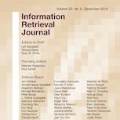The rapid development of large language models (LLMs) like Llama has significantly advanced information retrieval (IR) systems. However, using LLMs for long documents, as in RankLLaMA, remains challenging due to computational complexity, especially concerning input token length. Furthermore, the internal mechanisms of LLMs during ranking are still not fully understood. In this paper, we first explore the internal workings of LLMs during relevance judgement and identify that specific attention heads play a crucial role in aligning relevant tokens. This observation inspires us to revisit the block pre-ranking strategy used in KeyB, which remains state-of-the-art (SOTA) on the TREC 2019 DL document ranking dataset. Building on these insights, we develop KeyB2, an advanced long document IR approach that integrates block pre-ranking with the performance of LLMs. KeyB2 efficiently identifies and processes the most relevant blocks, reducing computational costs and improving ranking effectiveness. Additionally, we introduce a new bi-encoder block matching strategy for KeyB2. Comprehensive experiments on long-document datasets, including TREC 2019 DL, Robust04, and MLDR-zh, show that KeyB2 outperforms baselines like RankLLaMA and KeyB by reducing reranking time and GPU memory usage while enhancing retrieval performance, achieving new SOTA results on TREC 2019 DL with higher NDCG@10 and MAP scores.
翻译:暂无翻译




